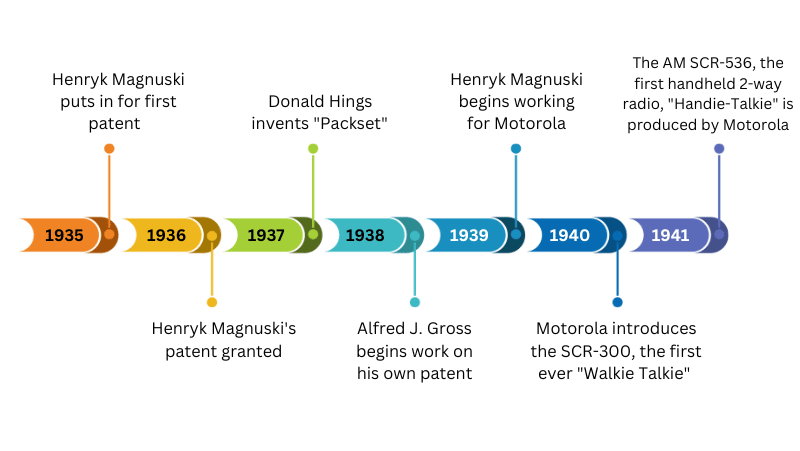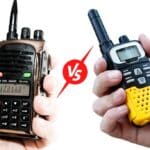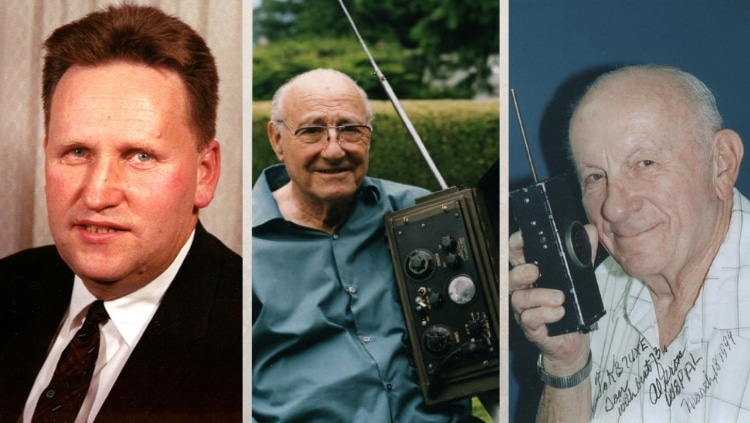
Every piece of technology has an in-depth history of how it came to be. Like everything else, the walkie-talkie has its own fascinating, albeit complicated, history.
Today, our world is full of different technologies like the walkie-talkie that we pick up and push a button to use. But it was more challenging than pressing a button for the men and women who have made the tech world advance quickly in the last hundred years.
The invention of the walkie-talkie is credited to multiple engineers across North America between 1936 and 1938. Donald Hings, Alfred J. Gross, and Henryk Magnuski were all working on similar projects around the same time and are all credited as the first inventors by different sources.
Back then, the walkie-talkie wasn’t a small device. It was around 17 inches tall and made of heavy metal rather than the sleek, compact, plastic designs you find today. The journey from the first-ever device to what we consider to be the best walkie-talkies today is a long one.
Who invented walkie-talkies? Trying to find the “real” walkie-talkie inventor.
There’s a lot of confusion when you look into who invented walkie-talkies. There are three main names that come up: Alfred J. Gross, Donald Hings, and Henryk Magnuski. Each time you read about one of them, you start to think that you’ve found the true inventor. That is until you read about the next guy.
As it turns out, there’s no clear and accurate answer to the question if you’re looking for a single person. This tech was developed by multiple people around the same time in different locations.
We’ll break it down so you can better understand how each one of these three inventors played a role in the invention of the beloved walkie-talkie.
1. Henryk Magnuski
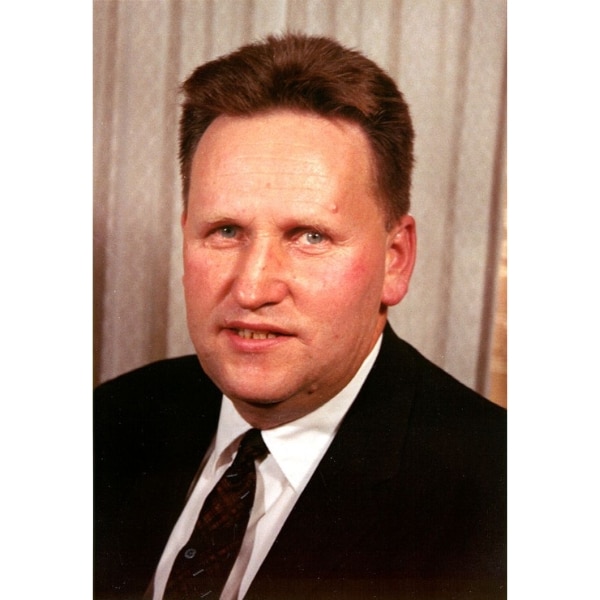
When looking at a timeline, Henryk was the first to have a walkie-talkie patented and in operation. His patent was granted in March 1936, the first of its kind. Even though he held the patent, he did not have a physical, functional walkie-talkie in his hands like some of the others on this list.
Henryk went on to work for Motorola in 1939 to contribute to the development and perfection of the first “real” walkie-talkie. Don’t forget Henryk. We’ll come back to him.
2. Donald Hings
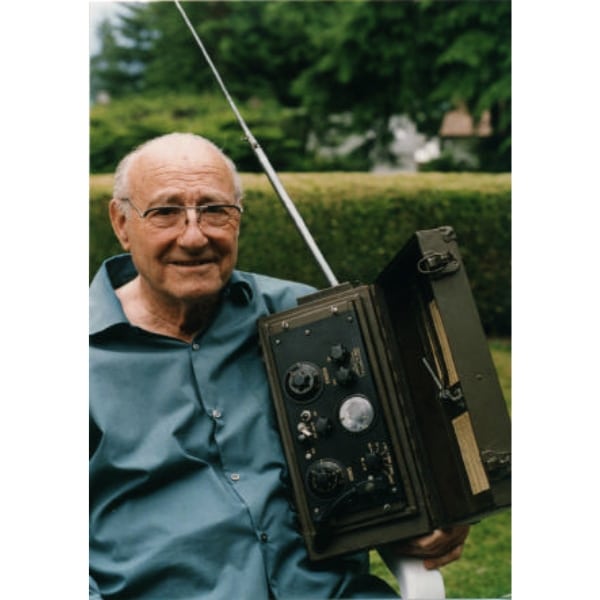
Canadian Donald Hings created the first portable radio signaling system for the company he worked for in 1937. He called this device a “packset,” later known as a walkie-talkie.
The packset functioned as a portable emergency radio. It turned voice into radio waves using a unique method of modulation he nicknamed “Ever Expanding.” This has been called the key to everything for future radio development.
Hings’ C-58 packset was perfect for war. It used voice scramblers for privacy and an audio filter system so the radios could be used over the loud drum of vehicles and gunfire. There were thousands of these packsets produced at the onset of WWII. It was the popular model until Motorola came up with something even better.
It can be said that Hings was the “true inventor” of the walkie-talkie. The truth is, there are too many different variables to choose a single inventor. Many people give credit to our next inventor, Alfred Gross, and they’re right in a way. The walkie-talkie wouldn’t be anywhere near what it is today without his influence.
3. Alfred J. Gross
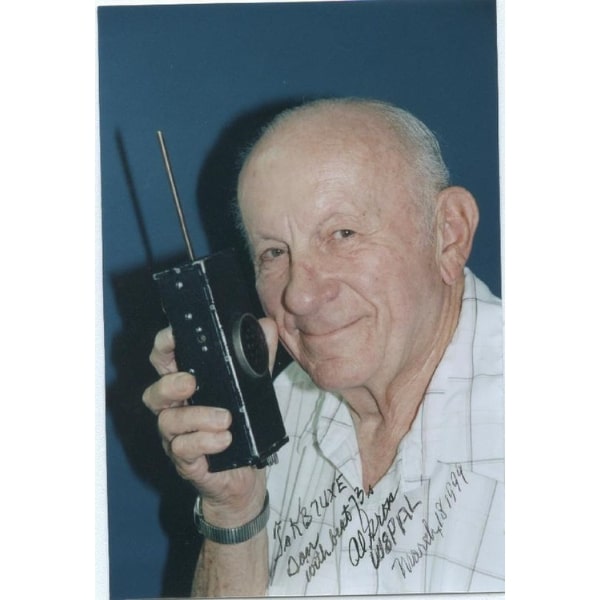
Alfred J. Gross is well known in the radio industry for multiple developments, including the walkie-talkie and Citizens’ Band (CB) radio. Gross set out to explore frequencies above 100 MHz, which had previously been unheard of.
The Office of Strategic Services recruited him right after his patent of the first walkie-talkie in 1938. While working for the OSS, he worked on the Joan-Eleanor system, a VHF (very high frequency) ground-to-air transmission used in war and espionage efforts.
The Joan-Eleanor system had a range of around 30 miles, making it effective for missions close to the base but unable to transmit much farther. Today, long-range two-way radios have become much more capable than that small 30-mile range.
4. Motorola and its team of engineers
The years immediately before and during World War II saw the development of the walkie-talkie really take off. Motorola entered the story around 1939 when they took these developing technologies and brought together the best engineers in the world to improve wartime communication.
They played a huge part in bringing about the radio and the walkie-talkie. Today, Motorola is more well-known for the phones they manufacture, but if we take a closer look, there is much more to their past.
Motorola’s Role in Walkie-Talkie History
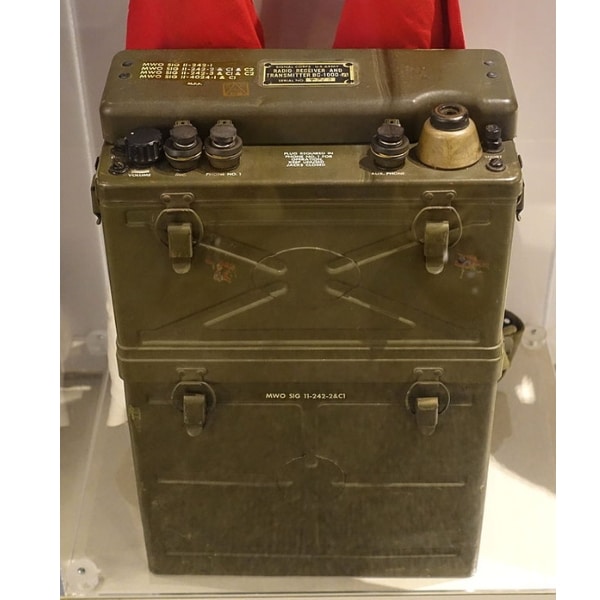
Motorola, previously the Galvin Manufacturing Corporation, brought about the first fully-functioning walkie-talkie during World War II. Engineers like Henryk Magnuski, Marion Bond, Lloyd Morris, and Bill Vogel took on the project. What they came up with in 1940 was the SCR-300, a backpack transceiver that also got the nickname “walkie-talkie.”
A year later, in 1941, the first handheld model was developed by Motorola. The SCR-536 was first referred to as a “handie-talkie.”
If you look into it, the definition of a walkie-talkie is usually laid out as a handheld, portable two-way radio. With that definition, the first-ever walkie-talkie would not actually be considered one today. The SCR-300 was held in a backpack, while the SCR-536 was actually able to be held in one hand while in use.
The History of the Walkie-Talkie: A Timeline
